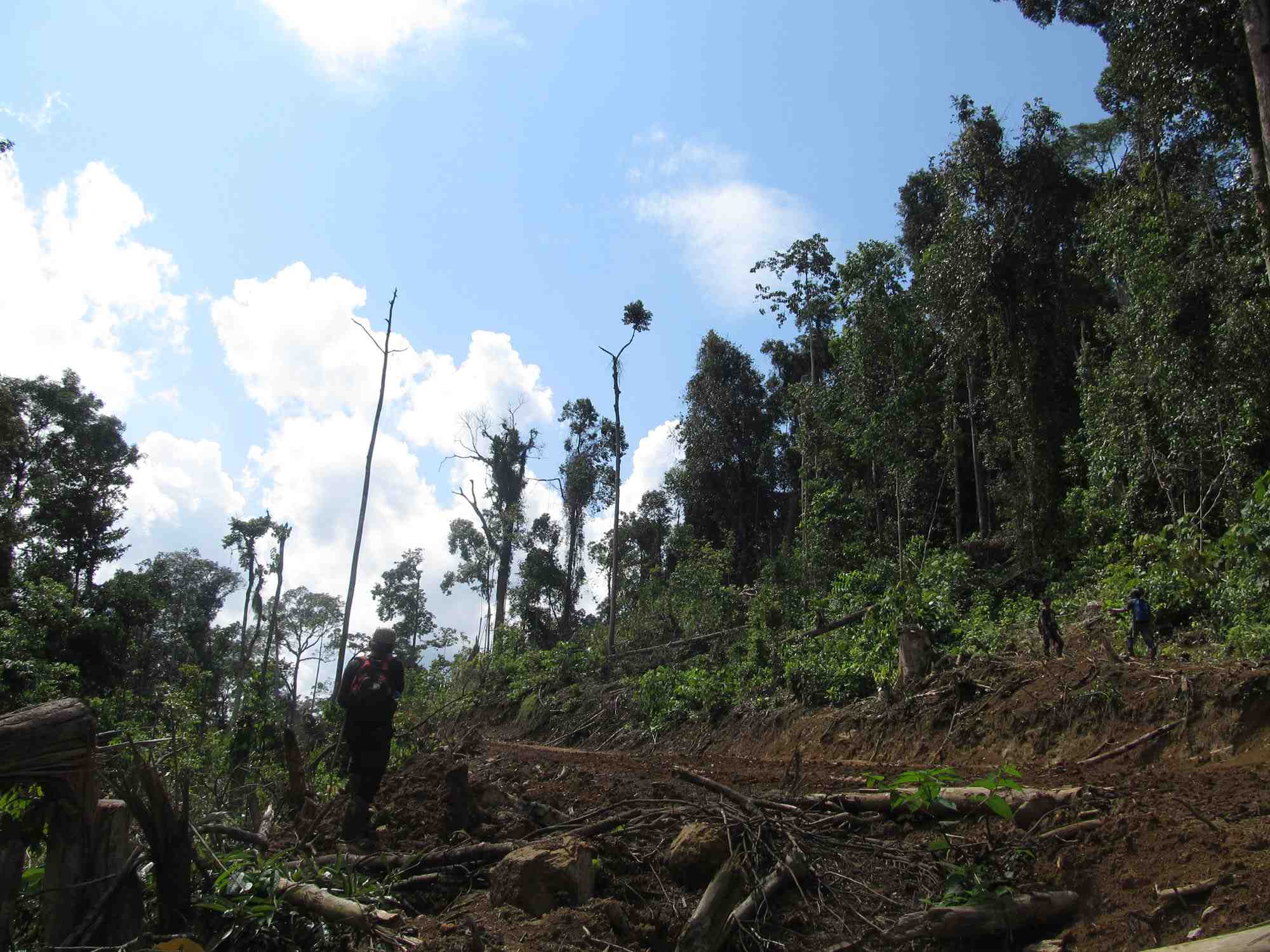Belantikan’s big ape count
Determining wild population sizes of orangutans and gibbons, both highly arboreal (tree-dwelling) apes species, is a conservation challenge. But, over the years, scientist have come up with methods that enable accurate estimates. For example, with orangutan their nests are counted and with gibbons, it is their songs that are recorded and used. 
We are trying to find out more about the wild ape populations of the Belantikan Hulu region which is part of the greater Belantikan Arut – a spectacular landscape spanning 500,000 hectares across Central and West Kalimantan (Indonesian Borneo). The Belantikan Conservation Programme (BCP) is a joint initiative of Yayorin (an Indonesian NGO) and ourselves.
The Belanitkan Hulu comprises primary and secondary lowland forests, including both recently logged forests and post-logging forests that have since recovered (over the last 35-40 years). The area has ravines, rivers, cliffs and logging roads – all synonymous with Borneo.
There is a large wild orangutan population, which was first surveyed in 2003, and a gibbon population, whose size is unknown. In 2012, The Rufford Foundation awarded funding to the BCP to build a small research station and to commence surveys of the ape species. The research station is now in use by BCP’s field researchers and by a team of biologists from the National University of Jakarta.
Our initial surveys indicate there has been a continuing decrease in the orangutan population over the years. This population was estimated to be the largest population of orangutans existing in the wild outside of the protected area system. In fact, more than 70% of the total Bornean orangutan population in the wild is found outside of designated conservation areas. Hence, it is important to determine the size and distribution of the Belantikan population accurately, and to be able to monitor the current apparent population decline, so that appropriate conservation actions can be taken.
The gibbon survey estimated a density of just over 3 groups per km2, which is considered high. The BCP will conduct further research to determine how orangutans adapt to living in logging forests and to the varying degrees of disturbance. Further studies on gibbons will also survey the wider area and the estimated territory and cruising areas, study group composition as well as changes in habitat conditions between seasons.
We hope to provide you with new and exciting findings from Belantikan as we start to find out more about its forests and what lives within.
We are extremely grateful to The Rufford Foundation and to the US Fish and Wildlife Service Great Ape Conservation Fund for supporting this research project, and to the Arcus Foundation for supporting the on-going conservation project.
Thank you,
Orangutan Foundation and Yayorin (Belantikan Conservation Programme)



